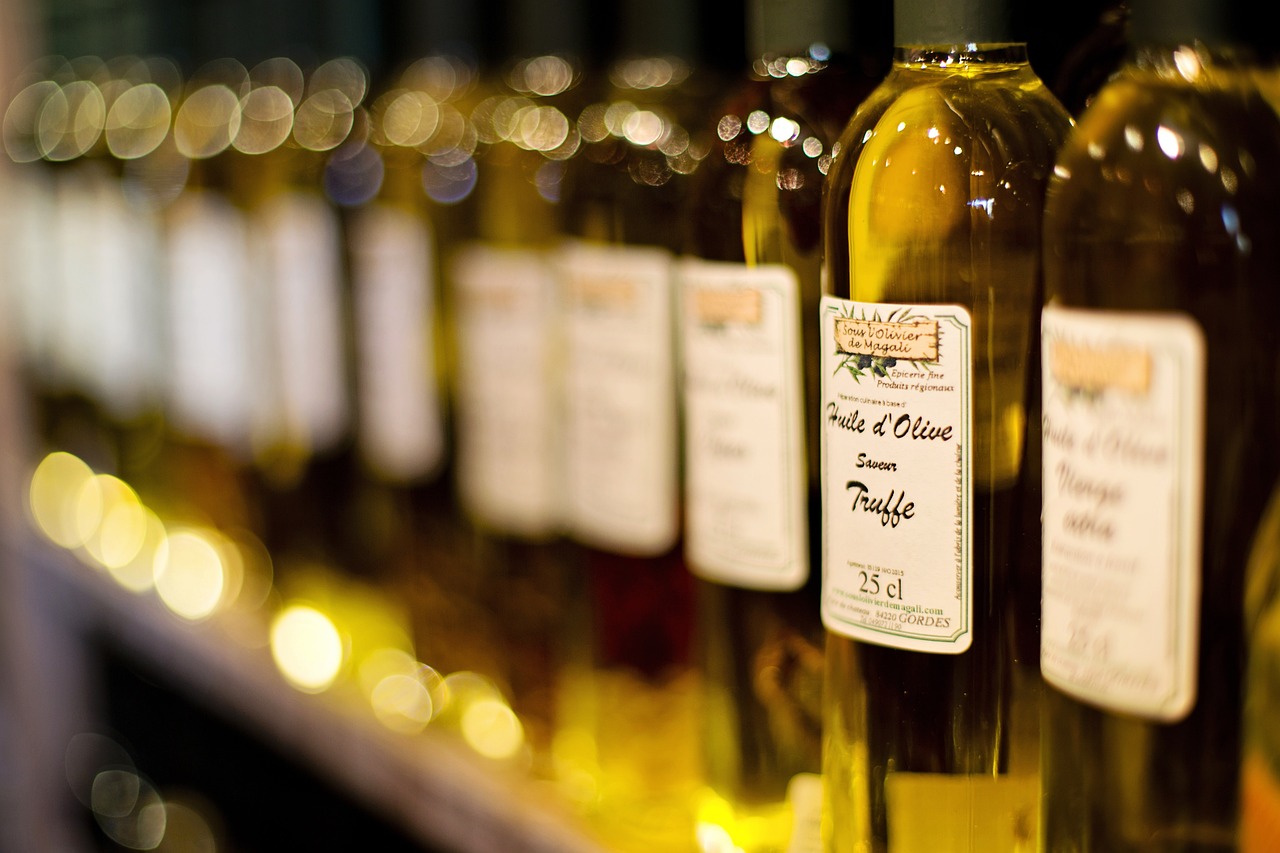Did you know that behind every delicious dish lies a story of culture, history, and tradition? Join us on Tastepan.com as we embark on a fascinating journey into the world of Jewish delicacies. From the chewy goodness of bagels to the savory delights of knishes, we’ll explore the rich tapestry of flavors that have been passed down through generations. Whether you’re a food enthusiast or just curious about different culinary traditions, get ready to immerse yourself in the vibrant heritage of Jewish delicacies. Get your taste buds ready for a mouthwatering adventure!
History of Jewish Delicacies

Origins of Jewish cuisine
Jewish cuisine has a fascinating history that dates back thousands of years. The origins of Jewish cuisine can be traced back to ancient Israel and the biblical times. The cuisine has been greatly influenced by the Jewish people’s interactions with various cultures and regions throughout history.
Influence of Jewish diaspora
One of the key factors that shaped Jewish cuisine is the Jewish diaspora. Throughout history, Jews have migrated to different parts of the world, bringing their culinary traditions with them and adapting them to the local ingredients and customs. The Jewish communities in different countries developed their own unique culinary styles, influenced by the local flavors and ingredients.
Significance of food in Jewish culture
Food holds immense significance in Jewish culture. It not only serves as nourishment for the body but also plays a vital role in religious and cultural traditions. Many Jewish holidays and celebrations are centered around specific dishes and ingredients, symbolizing historical events and spiritual values. The preparation and sharing of food often foster a sense of community and togetherness among Jewish families and communities.
Bagels: A Staple of Jewish Cuisine
Origins and evolution of the bagel
The bagel, a iconic Jewish delicacy, has a long and interesting history. It is believed to have originated in Eastern Europe, particularly in Poland, during the 17th century. The exact origins of the bagel are still debated, but it is commonly known that Jewish bakers played a significant role in its development. Over time, the bagel has evolved to become a beloved staple of Jewish cuisine, as well as a popular international treat.
Traditional bagel preparation
Traditionally, bagels are made by boiling the dough before baking it. This unique cooking method gives the bagel its characteristic chewy texture and shiny exterior. The dough is typically made from flour, water, yeast, salt, and a touch of sugar, giving the bagels their distinct taste. After the boiling process, the bagels are then baked until golden brown.
Varieties of bagels
While the plain bagel is the classic choice, there are numerous variations and toppings available. Poppy seeds, sesame seeds, and everything bagel seasoning are common additions, enhancing the flavors and textures of the bagel. Other popular varieties include cinnamon raisin, onion, garlic, and even chocolate chip. Each variety offers a unique taste experience, catering to different preferences and cravings.
Knishes: A Quintessential Jewish Snack
Introduction to knishes
Knishes are another quintessential Jewish snack that has a rich history. Originating from Eastern Europe, particularly from Jewish communities in Poland and Russia, knishes have become a beloved savory treat worldwide. The dish typically consists of a savory filling, often made with potatoes, wrapped in dough and baked or fried.
Regional variations of knishes
As with many Jewish delicacies, knishes have regional variations that reflect the diverse Jewish communities. In Poland, for example, knishes are traditionally made with a potato and onion filling and are often baked. In America, Jewish immigrants brought their knish recipes with them and created new variations, including kasha (buckwheat) and spinach fillings.

Popular fillings for knishes
While potato remains a popular filling, there are numerous other options to explore. Some common variations of knishes include cheese, meat, mushroom, and even sweet fillings like apple and cherry. The wide range of fillings allows for endless flavor combinations, ensuring that there is a knish to suit every palate.
Falafel: A Jewish Middle Eastern Delicacy
History and Jewish association with falafel
Falafel is a beloved Middle Eastern dish that has deep roots in Jewish culinary traditions. Though its exact origins are debated, it is widely known that Jewish communities in the Middle East have been enjoying falafel for centuries. Today, falafel is not only a staple of Jewish cuisine but also an iconic street food enjoyed by people around the world.
Traditional falafel recipe and ingredients
Traditional falafel is made from a mixture of ground chickpeas or fava beans, combined with herbs and spices such as parsley, cilantro, cumin, and garlic. These ingredients are blended together to form a thick paste that is then shaped into small balls or patties. The falafel is typically deep-fried until golden brown, creating a crispy exterior and a soft, flavorful interior.
Accompaniments and serving suggestions
Falafel is often served in a pita or flatbread, accompanied by various toppings and sauces. Common accompaniments include hummus, tahini sauce, pickled vegetables, and fresh herbs. The combination of flavors and textures creates a delightful sensory experience, with the creamy sauces balancing out the crispy falafel and the tangy pickles adding a burst of freshness.
Challah: The Iconic Jewish Bread
Significance of challah in Jewish traditions
Challah holds immense significance in Jewish traditions, particularly during Shabbat and other holidays. Shaped in a distinctive braided form, challah represents unity and togetherness. It is customary to have two challah loaves at the Shabbat table, symbolizing the double portion of manna that fell from heaven during the Israelites’ journey in the desert.
Traditional preparation of challah
Challah is made from a rich dough that typically includes ingredients such as flour, yeast, eggs, sugar, oil, and salt. The dough is kneaded until it becomes elastic and then left to rise. After rising, the dough is divided into strands, which are braided together to form the iconic challah shape. Before baking, the challah is often brushed with egg wash, giving it a glossy finish.
Symbolism and rituals associated with challah
Before breaking bread, it is customary to say a blessing over the challah. The ritual of separating a small piece of dough, known as “taking challah,” is also observed by some Jewish communities. This act is reminiscent of the tithing of dough that was required in ancient times. Challah is not only a delicious bread but also a symbol of tradition and spirituality for Jewish families around the world.
Latkes: The Hanukkah Treat
Overview of latkes
Latkes are a beloved treat enjoyed during the festival of Hanukkah. These delicious potato pancakes have a crispy exterior and a tender interior, making them a delight for the taste buds. Latkes are traditionally cooked in oil, symbolizing the miracle of the oil that lasted eight days in the ancient temple.

Traditional ingredients and cooking techniques
The traditional latke recipe calls for grated potatoes, onions, eggs, flour, and salt. The grated potatoes and onions are squeezed to remove excess liquid before being mixed with the other ingredients. The mixture is then portioned into patties and fried until golden brown and crispy. The frying process ensures that the latkes have a mouthwatering texture and a satisfying crunch.
Latkes in Jewish holiday celebrations
During Hanukkah, it is customary to serve latkes with sour cream or applesauce as accompaniments. This combination of flavors provides a delightful balance of tanginess and sweetness. Latkes are also enjoyed throughout the year on various occasions, such as Jewish brunches and festive gatherings. Their comforting and indulgent nature makes them a favorite among people of all ages.
Matzo Ball Soup: The Jewish Comfort Food
History and cultural significance of matzo ball soup
Matzo ball soup is a beloved comfort food in Jewish cuisine, particularly during Passover. It is believed to have originated in Eastern Europe and has since become a symbol of Jewish culinary traditions. The soup consists of simple ingredients, yet it holds a deep cultural significance, reminding Jews of their journey from slavery to freedom.
Traditional recipe and cooking methods
Matzo ball soup is made from matzo meal, eggs, water, schmaltz (rendered chicken fat), and spices. The ingredients are combined to form a dough, which is then shaped into balls. The matzo balls are simmered in a flavorful broth, often made from chicken or vegetable stock, until they become soft and fluffy. The result is a comforting and nourishing bowl of soup that warms the soul.
Variations and adaptations of the dish
While the traditional matzo ball soup recipe is widely enjoyed, there are variations and adaptations that cater to different tastes and dietary restrictions. Some people prefer fluffy and light matzo balls, while others prefer denser and sink-to-the-bottom balls. Additionally, creative additions such as vegetables, herbs, and spices can be incorporated into the broth to add depth and flavor to the soup.
Rugelach: The Sweet Pastry Delight
Introduction to rugelach
Rugelach is a delightful sweet pastry that has its origins in Eastern Europe. The name “rugelach” translates to “little twists” in Yiddish, perfectly describing the shape of these delectable treats. Rugelach is made from a cream cheese-based dough, which is rolled out and filled with various sweet fillings before being baked to golden perfection.
Traditional ingredients and preparation
The traditional rugelach recipe calls for a dough made from cream cheese, butter, flour, sugar, and salt. The dough is chilled before being rolled out into circles or triangles. The circular dough is then spread with a layer of sweet fillings such as fruit preserves, chocolate, nuts, or cinnamon sugar. The dough is then cut into wedges or triangles, rolled up, and baked until golden brown.
Popular flavors and variations
Rugelach offers a wide array of flavors and fillings to suit every taste preference. Some popular variations include apricot, raspberry, chocolate, cinnamon, and walnut. Creative bakers have also experimented with savory fillings such as cheeses and herbs, adding a unique twist to this traditional pastry. Whichever flavor you choose, rugelach is sure to satisfy your sweet tooth and leave you craving more.
Gefilte Fish: A Pesach Tradition
Background of gefilte fish
Gefilte fish is a traditional dish that holds a special place in Jewish cuisine, particularly during the holiday of Passover. The dish consists of ground fish, usually a combination of whitefish, pike, and carp, mixed with onions, eggs, matzo meal, and seasonings. Gefilte fish is typically eaten cold and served with horseradish, symbolizing the bitterness of slavery and the hope for redemption.
Traditional gefilte fish recipe
The traditional method of preparing gefilte fish involves grinding the fish and onions together before mixing in the other ingredients. The mixture is then formed into oval-shaped patties or balls, which are poached in fish stock or water until cooked through. The cooked gefilte fish is then chilled and served cold as a refreshing and flavorful appetizer.
Gefilte fish customs during Passover
During the Passover holiday, gefilte fish is a staple on the Seder table. It is customary to eat gefilte fish as part of the meal, representing the sacrifices made by the Jewish people during their exodus from Egypt. The horseradish provides a pungent and spicy kick, symbolizing the intensity of the Jews’ journey from slavery to freedom. The combination of flavors and textures makes gefilte fish a unique and cherished dish during this significant holiday.
Shakshuka: A Mediterranean Jewish Dish
Origins of shakshuka
Shakshuka is a flavorful and vibrant dish that has its roots in Jewish and North African cuisines. The dish consists of poached eggs in a rich tomato and pepper sauce, often seasoned with spices such as cumin, paprika, and chili. The combination of bold flavors and contrasting textures makes shakshuka a popular choice for breakfast or brunch.
Ingredients and cooking process of shakshuka
To make shakshuka, onions, bell peppers, and garlic are sautéed until tender before adding canned tomatoes and spices. The sauce is allowed to simmer until it thickens and develops a deep and robust flavor. The eggs are then carefully cracked into the sauce, allowing them to poach. The finished dish is often garnished with herbs such as parsley or cilantro and served with crusty bread for dipping.
Variations and regional adaptations
Shakshuka offers endless possibilities for customization and adaptation. Some variations include adding ingredients such as feta cheese, spinach, or chorizo to the sauce, adding an extra dimension of flavor. In different regions, various spices and herbs are used, resulting in unique flavor profiles. Regardless of the variation, shakshuka remains a delicious and satisfying dish that brings people together around the table.
As we explore the history of Jewish delicacies, it becomes clear that food is much more than sustenance for the Jewish community. It is a powerful symbol of cultural identity, heritage, and tradition. From the iconic bagels to the comforting matzo ball soup, each dish carries with it a rich narrative of history and religious significance. Whether enjoyed during holidays, special occasions, or everyday meals, these Jewish delicacies bring people together, fostering a sense of community and celebration. So next time you savor a bite of knish or indulge in a rugelach, take a moment to appreciate the centuries-old traditions and the stories behind these delicious delights.

